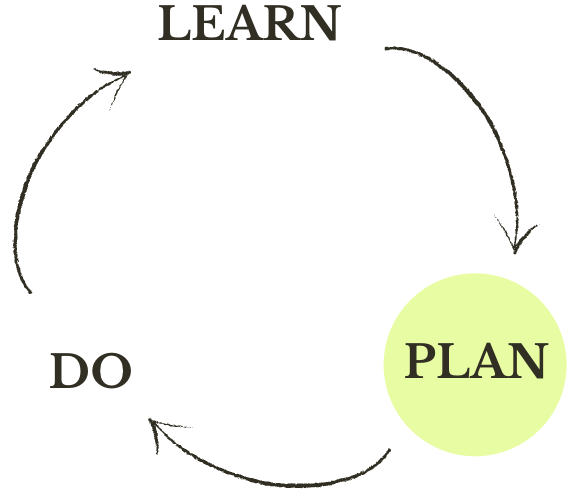PLAN
Costs of Land Stewardship
No doubt about it, it can get expensive to care for the land. Long term, land under stewardship costs money yet delivers reduced climate risks, greater health for wild animals and ecosystems, and great satisfaction for its stewards.
You may find costs presented as cost per project, per day, per task, or per acre. For your purposes, be sure to also consider the maintenance costs over time. Without maintenance, the money and time invested will be diminished, or wasted. Each Practice in this guide describes maintenance needs towards the bottom of the page.

Many factors can push costs up or down:
- How dense or thick is the vegetation at this time?
- How widely spaced should the plants be when the work is finished?
- How large are the largest trees to be cut? Bigger trees require more safety precautions, heavy-duty equipment, and possibly greater insurance coverage. Lumber from large trees could potentially be sold to offset stewardship costs.
- How far must the woody material be transported, and how many times?
- Whether the person hired to mark plants to be retained, areas to be left untouched (steepest slopes, retained stands of shrubs, active bird nests, etc) expects to be paid
- How careful you require workers to be; for example in avoiding harm to desirable plants, avoiding soil disturbance, etc. Such care requires more training and supervision.
- How much outside work is in the pipeline for contractors you wish to hire, creating wage competition
- Whether you intend to support your workers so that they earn enough money to live in our high-cost region (see Labor on Resources for Implementing)
- Whether you can engage volunteer labor to help; for example, the Good Fire Alliance or similar organizations may participate in a prescribed fire, or you can invite a local group to pull broom in exchange for lunch, or offer the land as a site for training or Indigenous cultural use
Note that federal land management assistance programs such as the North Bay Forest Improvement Program pay 40-80% of project cost, but their cost assumptions are low for our high-cost region.
Very roughly, hiring a contractor to do thinning, limbing, piling, some chipping, and some lop and scatter could range from $2000 to $6000 per acre in 2024 dollars.
Some costs that go into this are:
An example of costs based on a set of detailed treatments is this shaded fuel break project done at Jenner Headlands in 2019.


